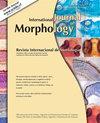足球运动员的区别因素是有氧运动表现,而不是ACTN3基因
IF 0.5
4区 医学
Q4 ANATOMY & MORPHOLOGY
引用次数: 0
摘要
本研究的目的是揭示ACTN3基因型(RR, RX, XX)和有氧运动表现[溜溜球IRT1 (m), VO2 max (ml/kg/min)]在职业和地区业余足球运动员中的差异,并揭示哪些参数是这些运动员的独特因素。职业足球运动员71人(年龄23.66 ±4.11岁;身高:1.79 ±6.99 m;体重:76.02 ±6.76 kg;体脂:11.59±3.11%)和62名地区业余足球运动员(年龄:23.63 ±3.77岁;身高:1.81 ±5.77 m;体重:76.36 ±7.53 kg;体脂:15.60±4.65%)自愿参加研究。通过商用试剂盒从运动员口腔上皮细胞中提取DNA进行遗传背景分析后,采用Real-Time PCR进行基因分型。此外,通过溜溜球IRT1测试来确定足球运动员的有氧运动表现。采用SPSS 23 (SPSS Inc., Chicago, IL, USA)软件包程序对试验数据进行统计分析。采用Shapiro-Wilk正态性检验和Levene方差齐性检验。参数分析采用卡方检验、独立样本T检验和单因素方差分析。差异有统计学意义(p0.05);但在有氧参数方面,职业足球运动员有统计学意义(p<0.05)。因此,我们可以说,在足球运动员中,有氧运动的表现才是区别因素,而不是ACTN3基因。本文章由计算机程序翻译,如有差异,请以英文原文为准。
The Distinguishing Factor in Soccer Players is Aerobic Performance, not the ACTN3 Gene
The purpose of this study was to reveal the differences between ACTN3 genotype (RR, RX, XX) and aerobic performance [Yo-Yo IRT1 (m), VO2 max (ml/kg/min)] in professional and regional amateur league soccer players and to reveal which of these parameters was a distinctive factor in these athletes.71 professional soccer players (age: 23.66 ± 4.11 years; body height: 1.79 ± 6.99 m; body weight: 76.02 ± 6.76 kg; body fat: 11.59±3.11 %) and 62 regional amateur soccer players (age: 23.63 ±3.77 years; body height: 1.81 ± 5.77 m; body weight: 76.36 ± 7.53 kg; body fat: 15.60±4.65 %) volunteered for the study. After DNA extraction from buccal epithelial cells via a commercial kit was performed for the genetic background of the athletes, Real-Time PCR was carried out for genotyping. Furthermore, Yo-Yo IRT1 test was performed to determine the aerobic performance of the soccer players. SPSS 23 (SPSS Inc., Chicago, IL, USA) package program was used for the statistical analysis of the data obtained in the tests. Shapiro-Wilk test for normality and Levene's test for homogeneity of variance were performed. Chi-Square, Independent Sample T Test and One Way ANOVA test were used in the analysis of the parameters. Statistical significance was set as p<0.05. In the study, there found no meaningful statistical significance in terms of the rs1815739 polymorphism in the ACTN3 gene between the groups (p>0.05); however, there was a statistical significance in favor of professional soccer players in terms of aerobic parameters (p<0.05). Consequently, it can be said that aerobic performance is the distinguishing factor, not the ACTN3 gene, in soccer players.
求助全文
通过发布文献求助,成功后即可免费获取论文全文。
去求助
来源期刊

International Journal of Morphology
ANATOMY & MORPHOLOGY-
CiteScore
0.90
自引率
20.00%
发文量
110
审稿时长
3-8 weeks
期刊介绍:
The International Journal of Morphology (Revista Internacional de Morfología) (Print ISSN 0717-9367; Online ISSN 0717-9502) is an official publication of the Chilean Society of Anatomy, Argentine Association of Anatomy and Panamerican Association of Anatomy. It is the continuation of Revista Chilena de Anatomía (Chilean Anatomical Journal) and is published bimonthly. The six issues published yearly constitute one volume. This journal covers morphology in all its aspects, Gross Anatomy, Histology and Developmental Biology, as well as human and animals morphological aspects, including Celular, Molecular, systems or Evolutionary Biology. Reviews, short and brief communications and Letters to the Editor are also accepted.
 求助内容:
求助内容: 应助结果提醒方式:
应助结果提醒方式:


